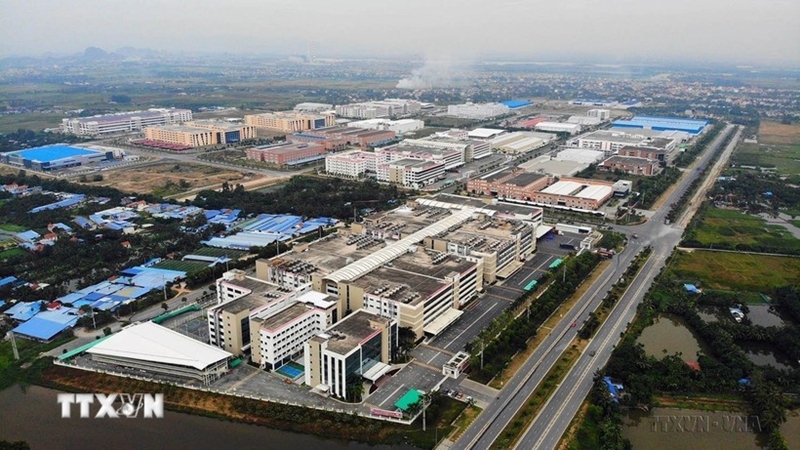According to the Government’s report to the National Assembly (N.A.) on the implementation of the socio-economic development plan for 2021-2025, total registered FDI has reached 185 billion USD, surpassing the 2016-2020 figure of 170 billion USD.
    |
 |
|
The Vietnam - Singapore Industrial Park (VSIP) in Hai Phong city |
In the first nine months of 2025 alone, registered FDI inflows topped 28.54 billion USD, up 15.2% year-on-year, with disbursed capital hitting a five-year record of 18.8 billion USD.
The quality of FDI has continued to improve, attracting a growing number of strategic investors and large-scale projects in high-tech sectors such as semiconductors and artificial intelligence. Notable examples include R&D centers established by NVIDIA, Qualcomm, SAP, and projects from SYKE and LEGO, alongside billion-dollar investments from Samsung, LG, Foxconn, Goertek, and Luxshare.
A verification report from the N.A.’s Economic and Financial Committee underscored the FDI sector’s “locomotive role” in Vietnam’s trade performance. The proportion of exports generated by FDI firms increased from 71.7% in the first quarter to 79.1% in the third one this year, while their share of imports rose from 63.1% to 72.5%.
Despite these positive contributions, the committee expressed concern over the economy’s heavy dependence on the FDI sector, warning that such reliance leaves Vietnam vulnerable to global supply chain disruptions. Another key weakness, it noted, is the limited linkages between foreign-invested and domestic enterprises, hindering the formation of a supporting industry ecosystem capable of competing on the international stage.
According to the World Trade Organization’s 2024 report, the domestic value-added ratio in Vietnam’s strategic manufacturing exports remains relatively low compared with regional and global peers.
For example, in the electrical and electronics sector, one of Vietnam’s key export industries, the domestic value-added content stands at just 26.9%, far behind Thailand (52.2%), Indonesia (61.2%), India (66%), China (75.3%) and the Republic of Korea (68.8%).
During recent N.A. discussions, several lawmakers highlighted the need for a more selective approach to FDI attraction. Deputy Nguyen Dai Thang from Hung Yen province called for prioritizing projects with firm commitments on technology transfer, employment of Vietnamese workers, and cooperation with local enterprises.
Sharing this view, Nguyen Nhu So from Bac Ninh province emphasized that current FDI policies must include clearer requirements for localization and technology transfer.
FDI should serve as a catalyst to strengthen domestic production capacity, enhance the ‘Made in Vietnam’ value, and enable Vietnamese firms to take control of key stages in global supply chains. This is the true foundation for an independent and sustainable economy, he said.
Source: VNA